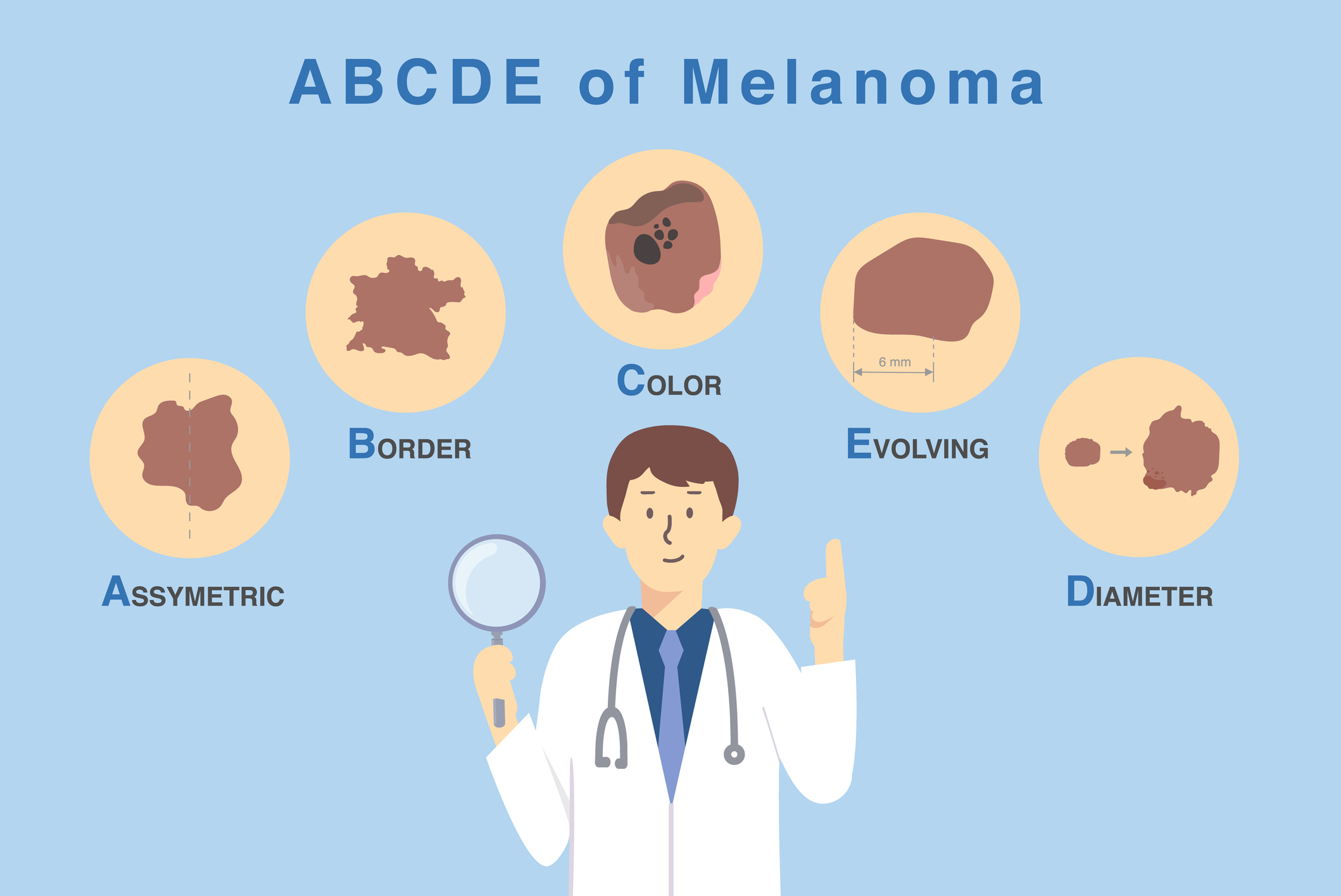Spotting Skin Cancer Early: The ABCDEs of Melanoma
By: Richard Rich
May is Skin Cancer Awareness Month, a time to focus on prevention, early detection, and the importance of sun protection—especially for those who work outdoors. Among the different types of skin cancer, melanoma is the most dangerous, but when caught early, it’s highly treatable.
So how do you spot the signs of melanoma before it becomes life-threatening? The answer lies in five simple letters: A-B-C-D-E.
What Is Melanoma?
Melanoma is a type of skin cancer that begins in melanocytes—the cells that produce melanin, which gives skin its pigment. While it accounts for a smaller percentage of skin cancer cases, it causes the majority of skin cancer deaths due to its potential to spread rapidly to other parts of the body.
Why Early Detection Matters
If detected early, the 5-year survival rate for melanoma is about 99%. But once it spreads to lymph nodes or distant organs, that survival rate drops significantly. That’s why knowing what to look for—and checking your skin regularly—is critical.
The ABCDE Rule: What to Watch For
Use the ABCDE method as a guide for examining moles, spots, or growths on your skin:
- A – Asymmetry
One half of the mole or spot doesn’t match the other half. Healthy moles are usually symmetrical. - B – Border
Melanomas often have uneven, ragged, or blurred edges—not smooth or well-defined borders. - C – Color
Look for varied shades of brown, black, tan, red, white, or even blue. Multiple colors in one spot is a red flag. - D – Diameter
Most melanomas are larger than 6 mm (about the size of a pencil eraser), though they can be smaller when detected early. - E – Evolving
Any change in size, shape, color, elevation, or new symptoms like itching or bleeding could be a warning sign.
Don’t Forget High-Risk Areas
Melanoma often appears in places that receive frequent sun exposure but are easily overlooked when applying sunscreen:
- Ears and nose
- Neck and scalp
- Back of hands and forearms
- Cheeks and temples
- Lips
These areas are rarely covered by clothing and are particularly vulnerable during outdoor work or recreation.
Prevention Starts with Protection
The majority of skin cancers, including melanoma, are linked to UV exposure. That means the best way to reduce your risk is by wearing broad-spectrum sunscreen daily—rain or shine.
I.C. Industrial Sunscreen is formulated for professionals who work in the sun. It offers:
- SPF 36 broad-spectrum protection (UVA + UVB)
- Non-nano zinc oxide that rubs in clear
- Odorless, non-greasy, and non-tacky texture
- 80-minute water resistance, so it stays put during sweat or heat
Final Thought
Melanoma doesn’t have to be a death sentence—if you catch it early. Learn the ABCDEs. Check your skin monthly. And make daily sun protection part of your routine.
Because when it comes to skin cancer, prevention and early detection save lives.







